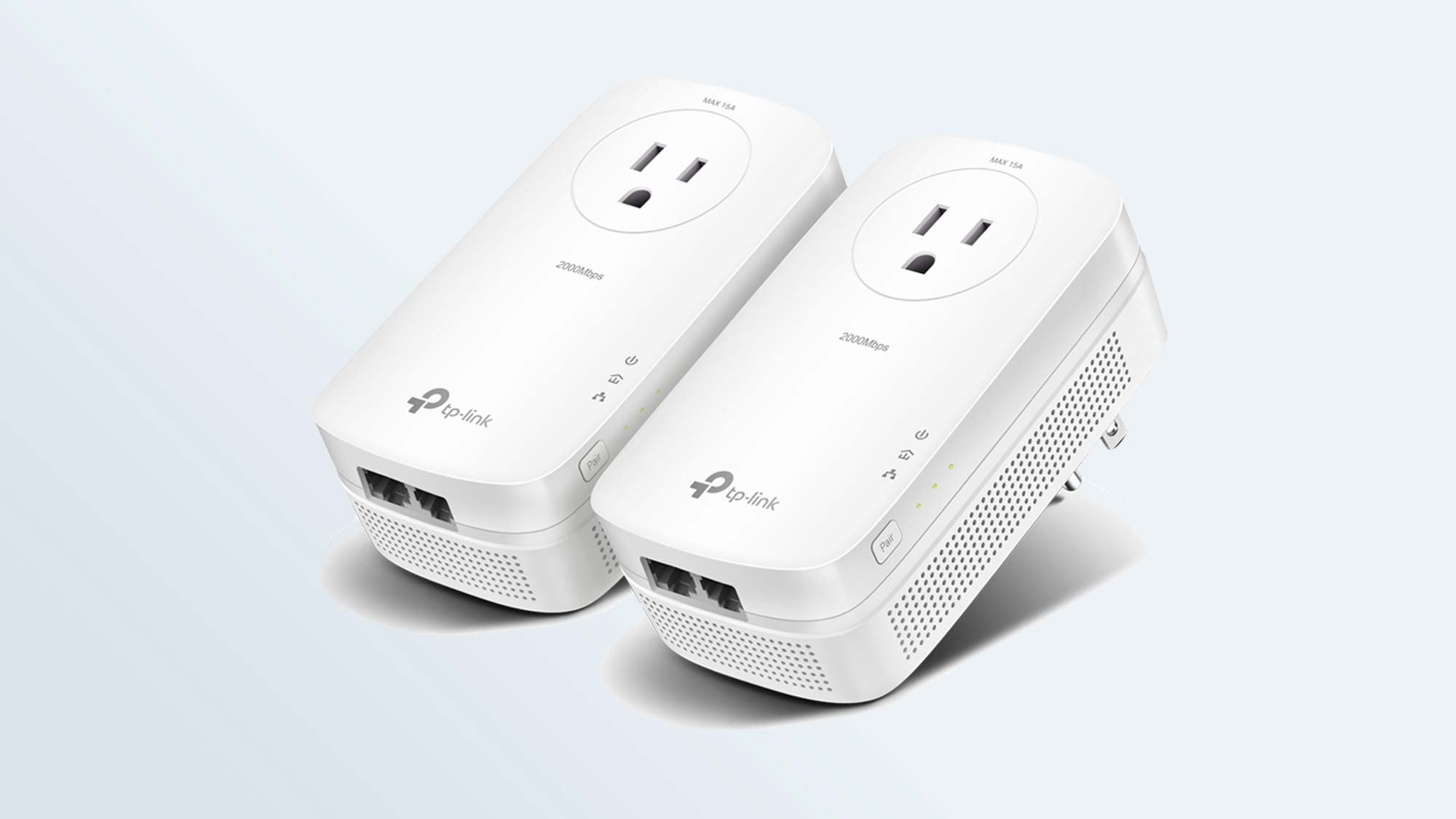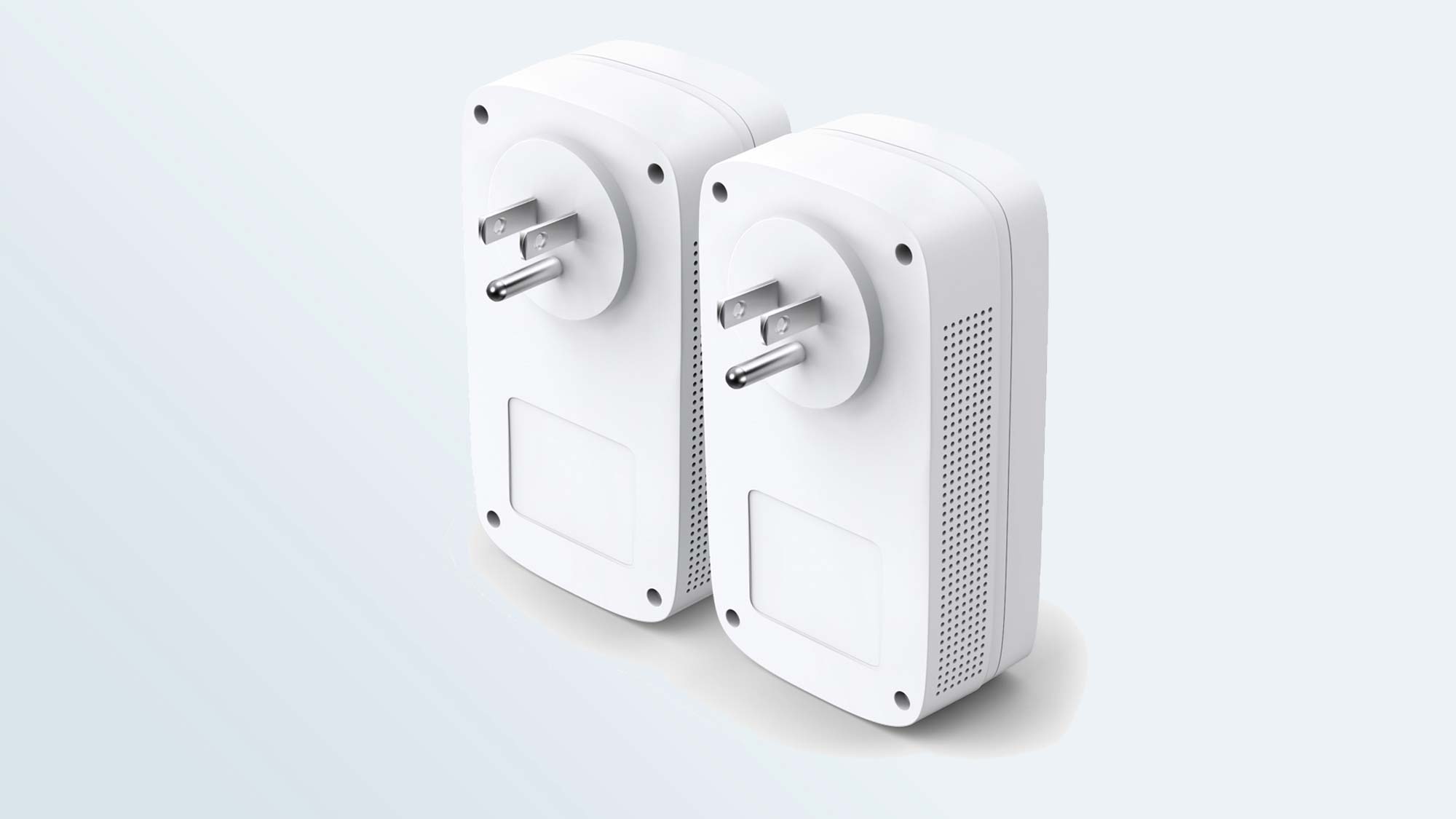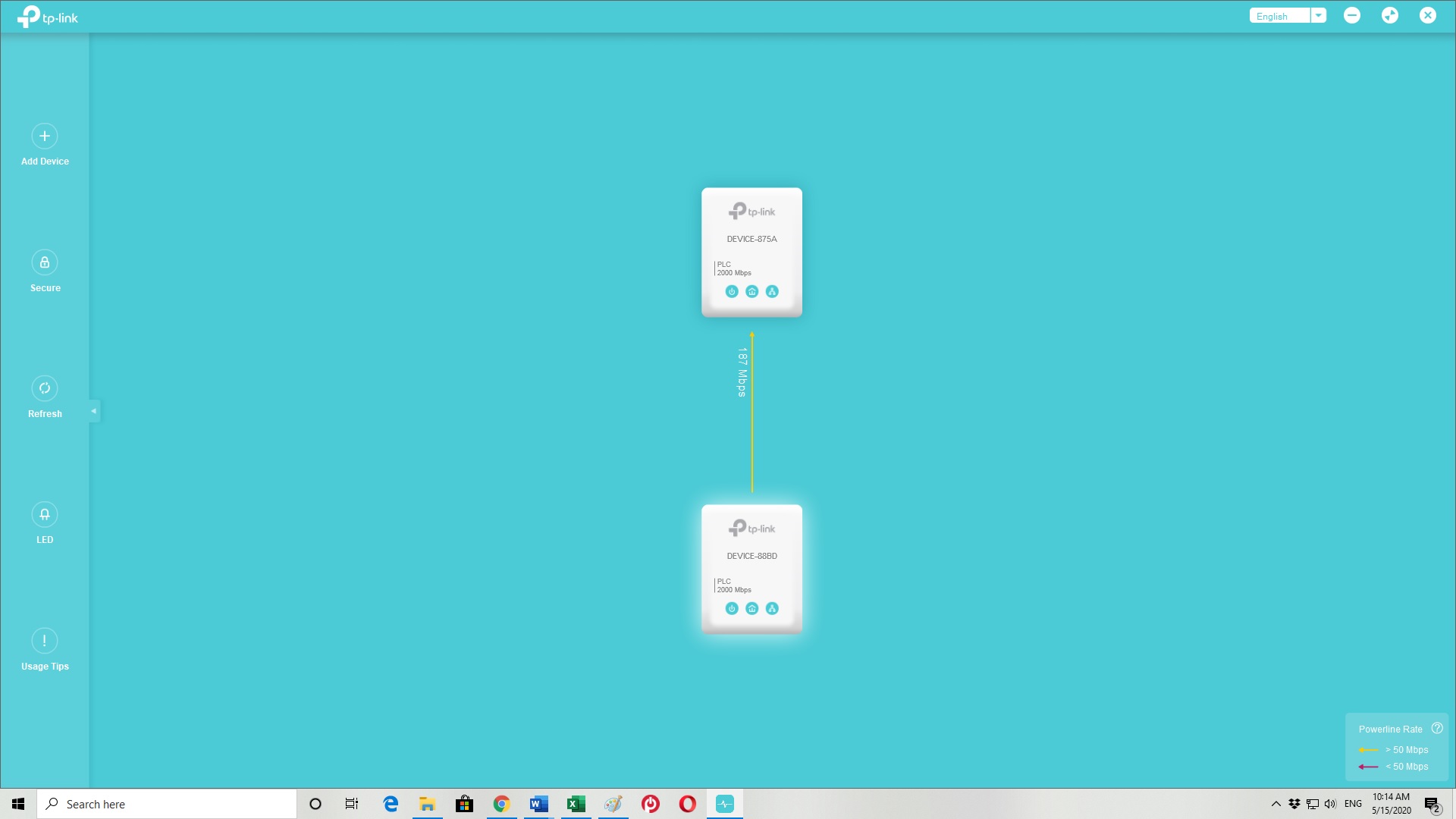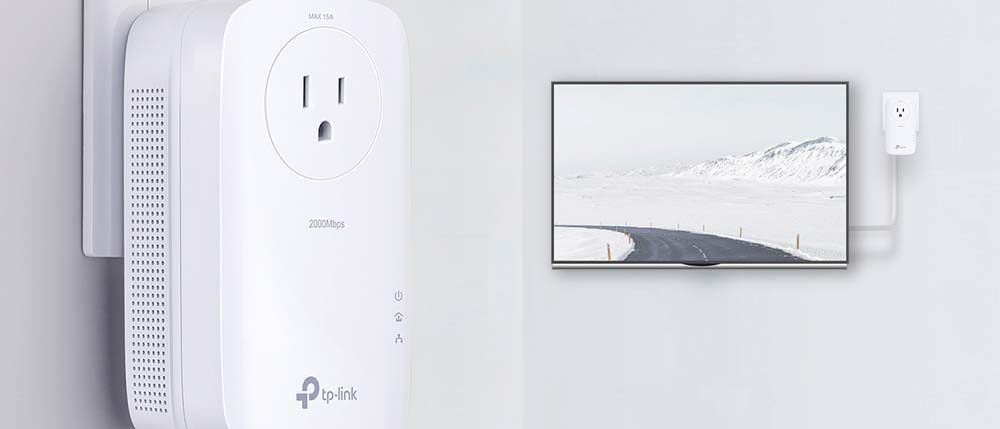Tom's Guide Verdict
If pushing data into every nook and cranny of your house counts for everything, TP-Link’s TL-PA9020P delivers with exceptional range that leaves other powerline extenders in the dust. While it falls short of the best when it comes to throughput and energy use, it adds an outlet for the one it uses, has a pair of Ethernet ports and includes a powerful utility for monitoring and configuring the devices. In other words, its extended range can help connect large homes.
Pros
- +
Excellent range
- +
AC passthrough outlet
- +
Two Ethernet ports
- +
Monitoring utility
Cons
- -
LEDs on side
- -
High energy use
Why you can trust Tom's Guide
Max Throughput: 42.9 Mbps
Performance at 100 feet: 27.6 Mbps
Max Range: 1,075 feet
Size: 5.2 x 2.8 x 1.9 inches
Three/Two Prong Plug: 3
Ethernet Gigabit Ports: 2
Estimated Power Bill: $23 per year
With the ability to push data into the far corners of large homes, the TP-Link TL-PA9020P powerline extender may not be the fastest kit around, but it can fill all but the largest homes with data while providing a replacement outlet and pair of Ethernet ports. On the downside, it uses more electricity than the others and its LEDs are hard to see.
Still, if you live in a large, poorly connected house, the $90 TP-Link TL-PAS9020P can put even the farthest rooms online. That alone makes it one of the best powerline extenders you can buy. (Still confused? Check out our article Wi-Fi extenders vs powerline adapters: Everything you need to know to learn more.)
TP-Link TL-PA9020P Powerline Extender: Design and features
One of the largest powerline devices available, TP-Link’s TL-PA9020P measures a bulky 5.2 x 2.8 x 1.9 inches, is roughly the size of a chalkboard eraser and humongous compared to the diminutive D-Link DHP-601AV. Its white plastic case has shotgun cooling holes on three sides and, unlike D-Link’s DHP-601AV, the TL-PA9020P has a three-prong grounded AC plug but has a pass-through AC outlet so you won’t lose an outlet.

The TL-PA9020P’s pair of gigabit Ethernet ports mean it can supply data to both a computer and a TV or other device without needing a wired network switch. The LEDs show power, powerline connection and Ethernet activity, but they are awkwardly placed on the case’s side and hard to see.

Underneath, the TL-PA9020P’s Pair button doubles as a security key to start the system’s AES 128-bit data encryption. Based on the HomePlug AV2 spec and Multiple Input Multiple Output (MIMO) technology, the TL-PA9020P can service several data-hungry users. Rated by TP-Link to be able to deliver 2Gbps of data, the company recommends using no more than 8 powerline devices on a network.
TP-Link TL-PA9020P Powerline Extender: Performance
Like the Netgear PLP2000, the TL-PA9020P uses Broadcom’s BCM60500 chipset. It had excellent range, with the ability to remain connected with 1,075 feet of cable between the sender and receiver. That nearly doubles the 575-feet range of the D-Link DHP-601AV. In other words, it’s ideal for big homes.
On the other hand, it delivered peak throughput of only 42.9 Mbps out of my home’s 200 Mbps broadband link, one of the slowest results we saw. At 100 feet, for instance, it could only muster 27.6 Mbps while the Netgear PLP2000’s 81.9 Mbps was nearly three times as high.
Still, it connected a previously offline garage with 36.3Mbps, making it the long-distance winner. It allowed me to watch videos, nose around the Web and play games.
While it got warm during use, the TL-PA9020P never got over 104 degrees Fahrenheit. It’s a power hog, though, with the devices each using upwards of 19-watts when the data was flowing fast and furious and 1.2-watts at idle. If it’s used for 12 hours a day, every day, it’s annual power use should be around $23 – one of the most expensive powerline devices to use.
TP-Link TL-PA9020P Powerline Extender: Setup and software
While the other devices were transmitting data in a few seconds, it took the TL-PA9020P upwards of three minutes to start moving data. This is a one-time delay during the initial setup of the two units.

In addition to Quality of Service software that allows for prioritizing Web surfing, gaming, video or Voice over IP (VOIP) selections, the TL-PA9020P comes with a useful utility. It not only shows the current connections with an optimistic appraisal of the throughput but you can remotely set up its encryption, rename each device and even turn off its LED lights.
The system’s two-year warranty includes full support, unlike Netgear’s onerous 90-day support policy. The site has a detailed manual, lots of helpful tips and instructions, such as for adjusting its QOS software.
TP-Link TL-PA9020P Powerline Extender: Verdict
The TP-Link TL-PA9020P is the powerline extender to get for those who live life large in a big unconnected house. It may be bigger than the D-Link DHP-601AV and slower than the Netgear PLP2000, but only the TP-Link TL-PA 9020P has the range to fill a huge home with powerline data. At $90, it is not the cheapest powerline set you can get, and will likely add to your power bill, but it pays huge dividends when it comes to connecting faraway parts of your house.
Brian Nadel is a freelance writer and editor who specializes in technology reporting and reviewing. He works out of the suburban New York City area and has covered topics from nuclear power plants and Wi-Fi routers to cars and tablets. The former editor-in-chief of Mobile Computing and Communications, Nadel is the recipient of the TransPacific Writing Award.


